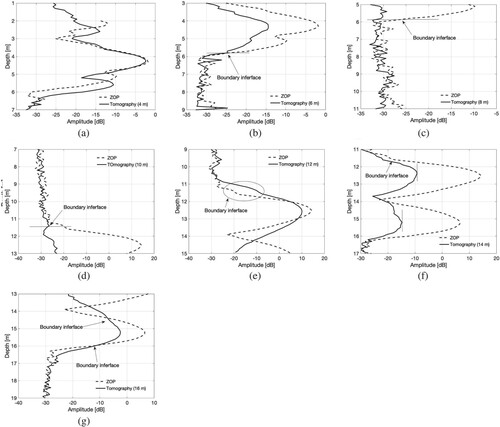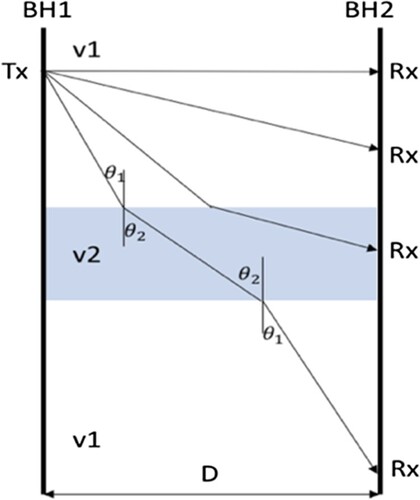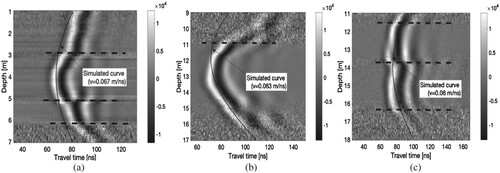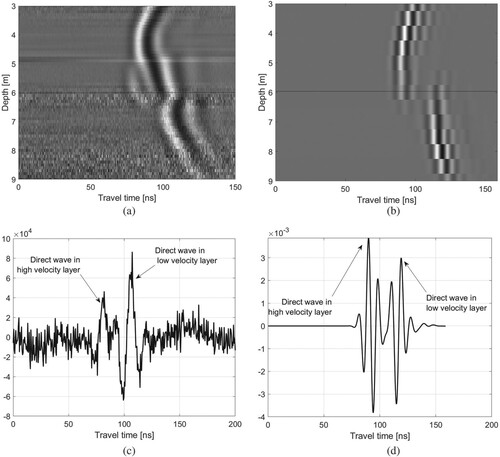Figures & data
Table 1. Borehole dimension.
Figure 2. (a) GPR profile of the ZOP. The black dashed line indicates the calculated velocity and the water content. (b) Modelled structure with assumed parameters. (c) Simulated GPR profile of ZOP mode.
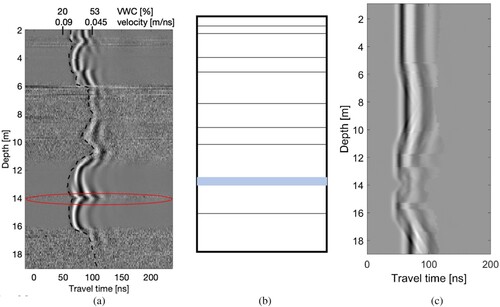
Figure 3. Tomography ray-coverage: (a) Tx: 4 m; (b) Tx: 6 m; (c) Tx: 8 m; (d) Tx: 10 m; (e) Tx: 12 m; (f) Tx: 14 m, and; (g) Tx: 16 m. Colour intensity indicates the apparent velocity.
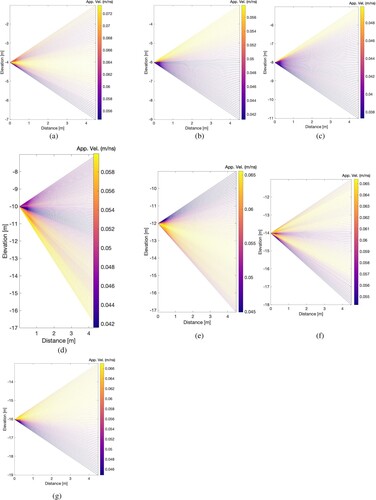
Figure 4. Modelled layers between the boreholes. (a) Antenna is placed at the boundary of the layers (,
). (b) Antenna length is placed in a thin layer (
,
). (c) Antenna length is placed in a thin layer (
,
). The solid black line indicates a layer boundary.
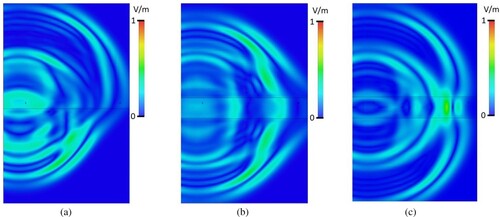
Figure 5. GPR profiles of the simulated data. (a) Low-contrast layer. (b) High-contrast layer. The solid black line indicates the boundaries of the thin layer.
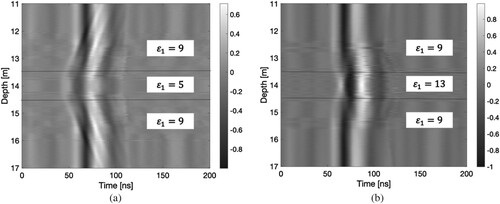
Figure 6. Amplitude profiles of measured data: (a) Tx: 4 m; (b) Tx: 6 m; (c) Tx: 8 m; (d) Tx: 10 m; (e) Tx: 12 m; (f) Tx: 14 m, and; (g) Tx: 16 m.
